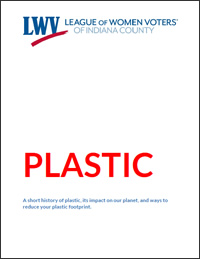The Pennsylvania League of Women Voters held a public seminar on the possible health effects of the natural gas industry Saturday at the Indiana Free Library.
The event was hosted by League members Vera Bonnet of the Indiana chapter and Heather Wechter from the Allegheny chapter.
Bonnet and Wechter talked about the various possible health effects from having gas drilling near a home and discussed the science being used to try to prove those health effects.
The main takeaway: Tracing possible health effects on a person directly to environmental factors created by the gas industry is difficult.
Wechter said that a group known as the Shale and Public Health Committee of the League of Women Voters started mostly right here in Indiana County.
The League claims that while it is difficult to scientifically link gas drilling with health effects, there are some studies that provide clues.
One community survey conducted in 14 Pennsylvania counties looked for common symptoms from 108 respondents in 55 households, all of which lived less than five miles from a gas production facility, according to the League. It found the most common symptoms were increased fatigue, nasal irritation and throat irritation, which in theory could be caused by chemicals associated with fracking.
One of the biggest issues the League points to is the possible contamination of the groundwater supply.
Hydraulic fracturing wells associated with the Marcellus shale can require 3 to 5 million gallons of water per day, according to the Susquehanna River Basin Commission. The used water contains not only proprietary industry chemicals but natural, and potentially dangerous, substances from deep underground. There used to be water treatment plants but these were discontinued in 2011, according to information provided at the seminar.
“The water treatment plants were unable to remove all of the chemicals, especially the radioactive chemicals,” Bonnet said. “It used to be they would treat it partially and dump it into the river and the saying was ‘dilution is the solution.’”
There is still a system of using the recycled water within the wells themselves but, Bonnet said, it is not close to being drinkable.
“The Pennsylvania frackers used to ship our wastewater to Ohio,” Bonnet said. “Recently there’s been some evidence that it has caused seismic activity there.”
Bonnet said that may have caused Ohio to limit the amount of toxic disposal there thus spurring the need for Pennsylvania deep injection wells. Injection wells are tapped-out wells where toxic materials are disposed of deep underground at high pressure. The more toxic the substance, Bonnet said, the deeper it must be disposed of.
The residents of Grant Township are currently fighting against the use of a gas well there for injection purposes. The township was threatened with a lawsuit from Pennsylvania General Energy, who wants to convert the tapped-out gas well into a place for brine dumping.
Bonnet said linking claims of health effects due to fracking is hard to prove on a scientific level.
“The main difficulty is that we can’t really establish cause and effect adequately,” Bonnet said. “Different professions have different standards of proof. Scientists, in order to say that they definitely know, that there is a connection between a molecule and another person’s illness, they have to be able to trace that molecule from the gas pad, through the aquifer, to the person’s well and into their lungs.”
There were no representatives from the energy industry present at the seminar.

